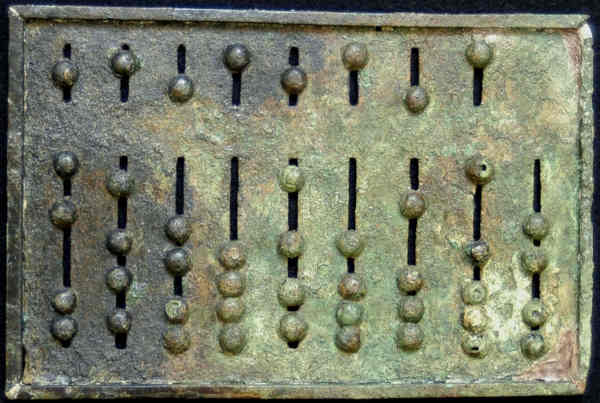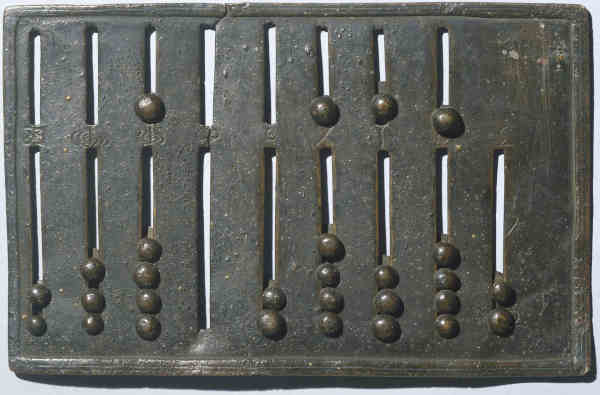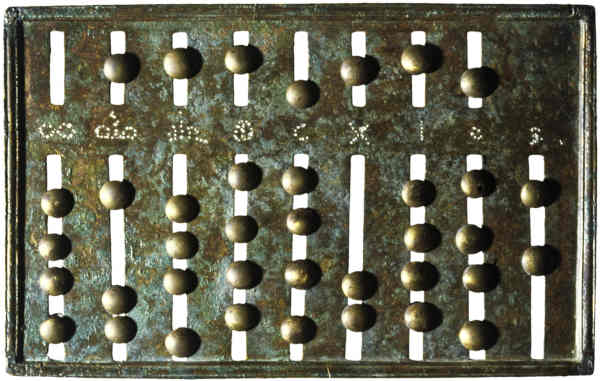Communications of the ACM
Original Roman Pocket Calculators are Extremely Rare

As far as we know, only three or four original specimens of the Roman hand abacus have survived. Three are made of bronze and are located in Aosta (Italien), Paris and Rome (see Figs. 1–3).

This object stems from a gravesite, from which the other objects allow dating to the 1st century AD. Credit: Regione Autonoma Valle d'Aosta, Assessorato del Turismo, Sport, Commercio, Agricoltura e Beni culturali, Dipartimento soprintendenza per i beni e le attività culturali, Archivi Patrimonio archeologico. Picture: L. Berriat. |

The numerical symbols are difficult to recognize. The slot at the far right consists of a single piece. Credit: Bibliothèque nationale de France |

This pocket calculator is made of bronze. The slot at the far right consists of a single piece. Credit: Museo nazionale romano, Palazzo Massimo alle Terme, Rome |
A fourth device is known to exist, but no one knows where this is. It is made of ivory, see In Search of A Rare Roman Pocket Calculator | blog@CACM | Communications of the ACM
But how does one calculate with Roman numerals? See
- How Did the Romans Calculate? | blog@CACM | Communications of the ACM,
- Calculating With Roman Numerals is Not So Difficult | blog@CACM | Communications of the ACM, and
- How Do You Calculate on the Abacus? | blog@CACM | Communications of the ACM.
Source
Bruderer, Herbert: Milestones in Analog and Digital Computing, Springer Nature Switzerland AG, Cham, 3rd edition 2020, 2 volumes, 2113 pages, 715 illustrations, 151 tables, translated from the German by John McMinn, https://www.springer.com/de/book/9783030409739
Herbert Bruderer is a retired lecturer in didactics of computer science at ETH Zurich. More recently, he has been an historian of technology. [email protected], herbert.bruderer@bluewin.
No entries found